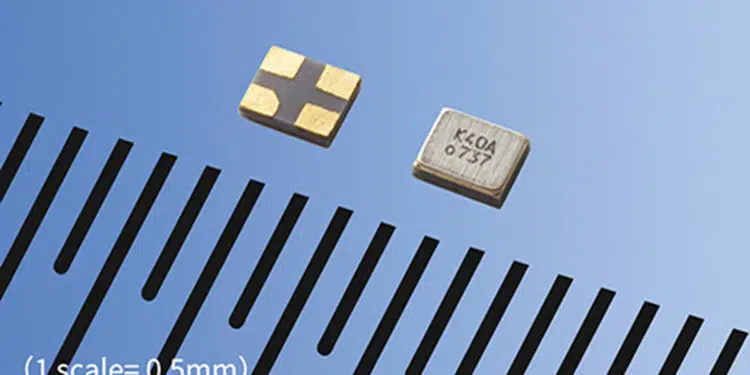KYOCERA’s ultra-precise plasma processing technology wins Japan’s 2021 science and technology award. Innovative technology produces crystal wafers of uniform thickness at nanometer-level accuracy to improve smartphones, wearable devices, hearing aids, ADAS tech, and more.
yocera Corporation (President: Hideo Tanimoto) announced that it has been awarded the 2021 “Science and Technology Award (Development Category)” by Japan’s Ministry of Education, Culture, Sports, Science, and Technology, for its ultra-precise plasma processing technology used to produce miniaturized crystal resonators. The technology was developed in conjunction with Professor Kazuya Yamamura of Osaka University.
Kyocera’s miniaturized crystal resonators are produced using advanced plasma processing technology (plasma CVM*1), a method involving a chemical reaction between neutral radicals in the plasma and the surface of the workpiece. This innovation produces crystal wafers of uniform thickness at nanometer-level dimensional accuracy without damaging the wafer surface. Consequently, the plasma CVM process allows mass production of high-performance quartz wafers with reduced frequency dispersion for use in ultra-compact quartz resonators, which are widely deployed in smartphones, wearable devices, miniaturized hearing aids, medical devices, and other electronic products. This technology will also allow Kyocera to develop a variety of products in the future, including low-frequency oscillators for automotive electronics, high-frequency oscillators for communications base stations, and miniaturized components for Advanced Driver Assistance System (ADAS) applications.
The Science and Technology Award recognizes individuals and enterprises that have contributed to the promotion of science and technology through outstanding achievements in research and development (R&D). It was designed to recognize innovative R&D achievements or inventions that improve the social economy and contribute to a higher quality of life.
*1. Plasma CVM: Chemical Vaporization Machining
































